6 Reasons Why Your Houseplant Leaves Are Turning Yellow – And How to Fix Them
Houseplant leaves turning yellow can signal trouble, so pinpointing the cause is key. Here's how to root out the reasons why it happens and help plants recover.
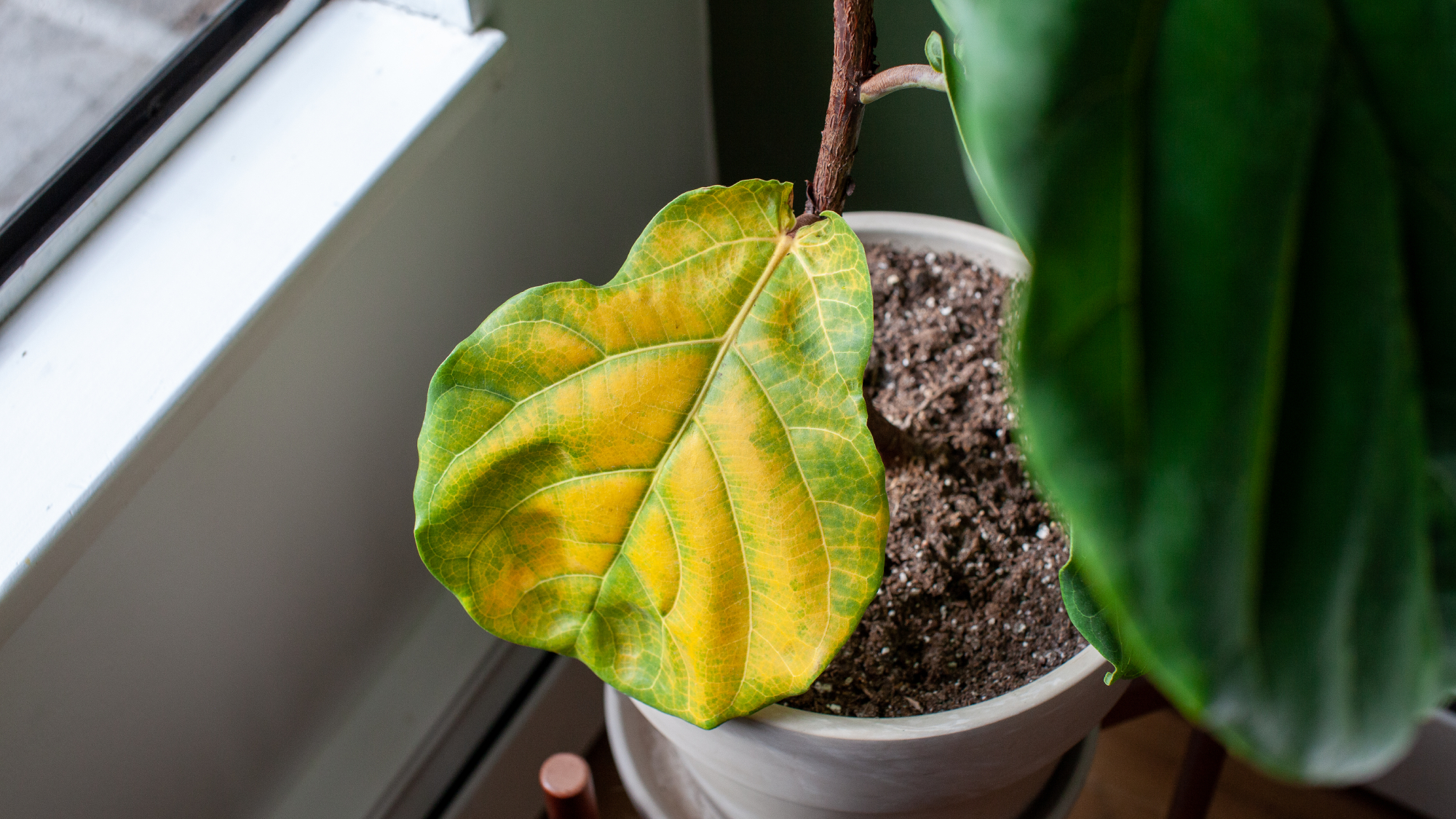

Yellow leaves on houseplants can sneak up on you, turning your lush and lively plan into one that seems a bit worn out. This issue affects just about anyone with indoor plants – edges start to lose color, then the leaves yellow, and fall off. Don't worry, though. Usually a small change in how you care for your houseplants can fix the problem quick.
Houseplant leaves turning yellow tends to signal something is out of whack. As with other common houseplant problems, pay attention to what part of the plant is affected. Does the yellowing start at the tips or spread from the bottom? That clue can point you right to what is wrong without the need for endless trial and error.
Leaves on houseplants turning yellow isn't always a big deal. If you spot it early and address the problem, your plant collection will be back to green in no time. It can take a little time to suss out the issue, which is why I've compiled a list of the most common causes for yellow leaves on houseplants. Plus, I'll share the best ways to address each problem for gorgeous, green plants.
1. Improper Watering
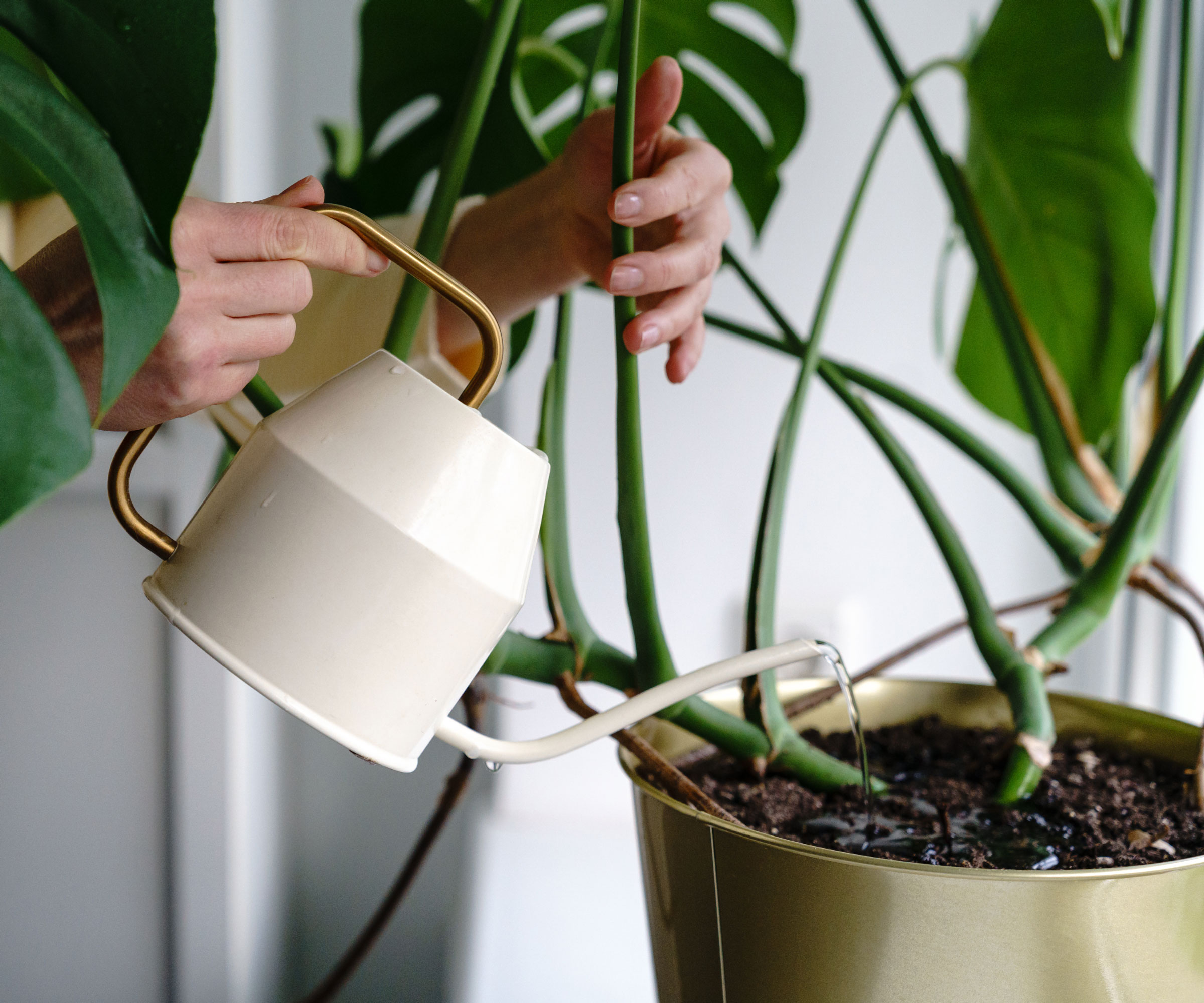
Watering is first on this list for a reason – it's extraordinarily easy to overdo it when it comes to watering houseplants, but most plant roots cannot tolerate saturated soil. They start to rot below the soil, which cuts off what leaves need to stay green.
The yellowing spreads upwards and eventually leaves feel limp. An easy way to tell if you're overwatering is to lift the pot. If it is heavy, that means there is a lot of extra moisture that the plant hasn't absorbed. Low-light houseplants are often more susceptible to root rot. The soil may stay damp longer in low-light areas because there isn't enough sun to help the moisture evaporate.
Reduce the watering frequency. Let the top couple inches (5 cm) of soil dry out completely before you water again – stick your finger in the potting mix to check. Pots with holes in the bottom are also necessary to drain off excess water and prevent rot. A 4-in-1 moisture meter, like this one from Amazon, can also keep you from guessing every time you water.
If root rot sets in, it's time to take action. Gently unpot the plant and trim mushy roots with clean scissors. Then repot in fresh potting mix to give your plant a new start. Expect recovery to take some time as roots regrow.
Sign up for the Gardening Know How newsletter today and receive a free copy of our e-book "How to Grow Delicious Tomatoes".
2. Nutrient Deficiencies
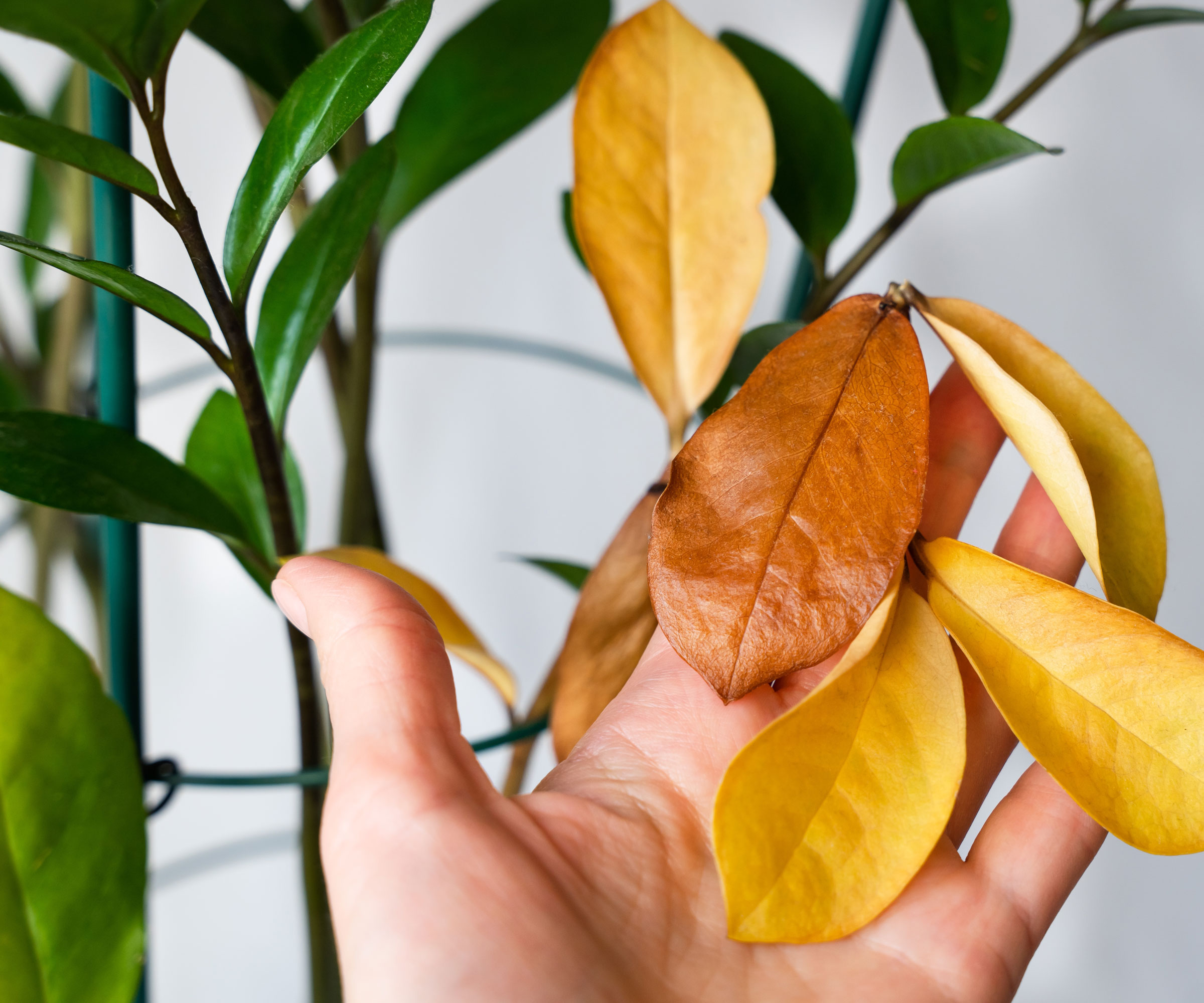
Plants pull the nutrients they need from the soil, but indoor potting mixes often deplete after only a few months. Nitrogen gets used up first, which causes yellowing older leaves at the bottom of the plant while the top stays green.
Iron deficiencies manifest differently – the veins remain green, but everything between the veins turns yellow. This kind of deficiency is a slow drain on the plant's energy. Compacted soil can block nutrient uptake, worsening the yellowing over time.
Fertilize houseplants regularly, but don't go too heavy on feeding. Incorporate a balanced fertilizer every month or so during growth spells and dilute it to keep from burning sensitive roots. Fresh potting soil every year or two also refreshes the nutrient supply. Try a liquid houseplant fertilizer, like this one from Amazon, that you can dilute if needed.
For iron issues, spray a chelated supplement like this from Amazon directly onto leaves. Plants absorb the nutrients and green up new growth fast.
3. Lack of Light

Lack of light is often overlooked as a problem with houseplants because many rooms feel bright enough to us, but plants often require much more. Stems and leaves stretch toward windows to get more sunlight.
But without strong enough rays, chlorophyll breaks down and leaves yellow on the shaded side. Growth slows, too, leaving a leggy plant with spindly stems and yellow leaves. North-facing windows often fall short for sun-lovers like the ficus or succulents.
Move your houseplant to a sunnier spot, but don't place it in direct sunlight that can scorch plants. East-facing windows work well for most plants because they provide bright, indirect sunlight.
Add a grow light if your space stays dim most of the day. A full-spectrum grow light panel, like this one from my favorite brand on Amazon, mimics the sun without much fuss. Rotate your houseplant every week or so to make sure exposure is even and to prevent yellowing on one side of the plant.
4. Temperature & Humidity Fluctuations
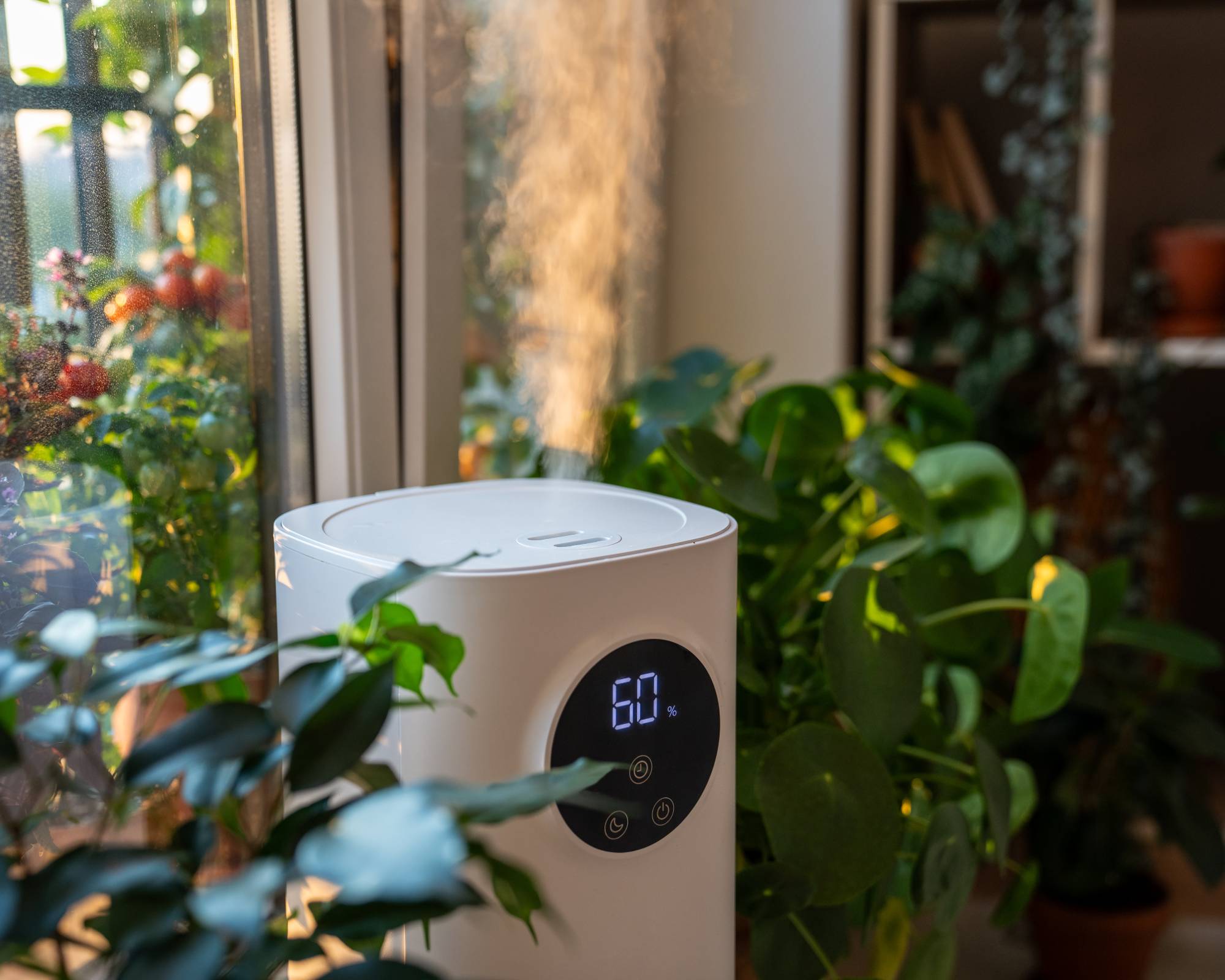
Drafts can significantly impact houseplants – cold drafts come from windows in winter but air vents also emit dry heat that can make houseplants crispy during the cold months.
Leaves on houseplants will turn yellow, especially around the edges, then drop from the sudden shock of either a hot or cold draft of air. Pair low humidity with this and yellowing leaves are almost a guarantee for tropical houseplants that thrive in steamy jungle climates.
Aim to keep temperatures around 60 to 70°F (16-21°C) and keep plants away from doors that open to the outside air as well as heating vents. Group plants together to hold in humidity. A small humidifier is another good addition to your growing setups, if indoor air gets too dry.
You can also use a combination thermometer-hygrometer gauge, like this one from Amazon, to spot temperature swings before they show up in the foliage. Pebble trays filled with water under pots also boost humidity without much effort and can ease plant stress during the winter months.
5. Pest Infestations
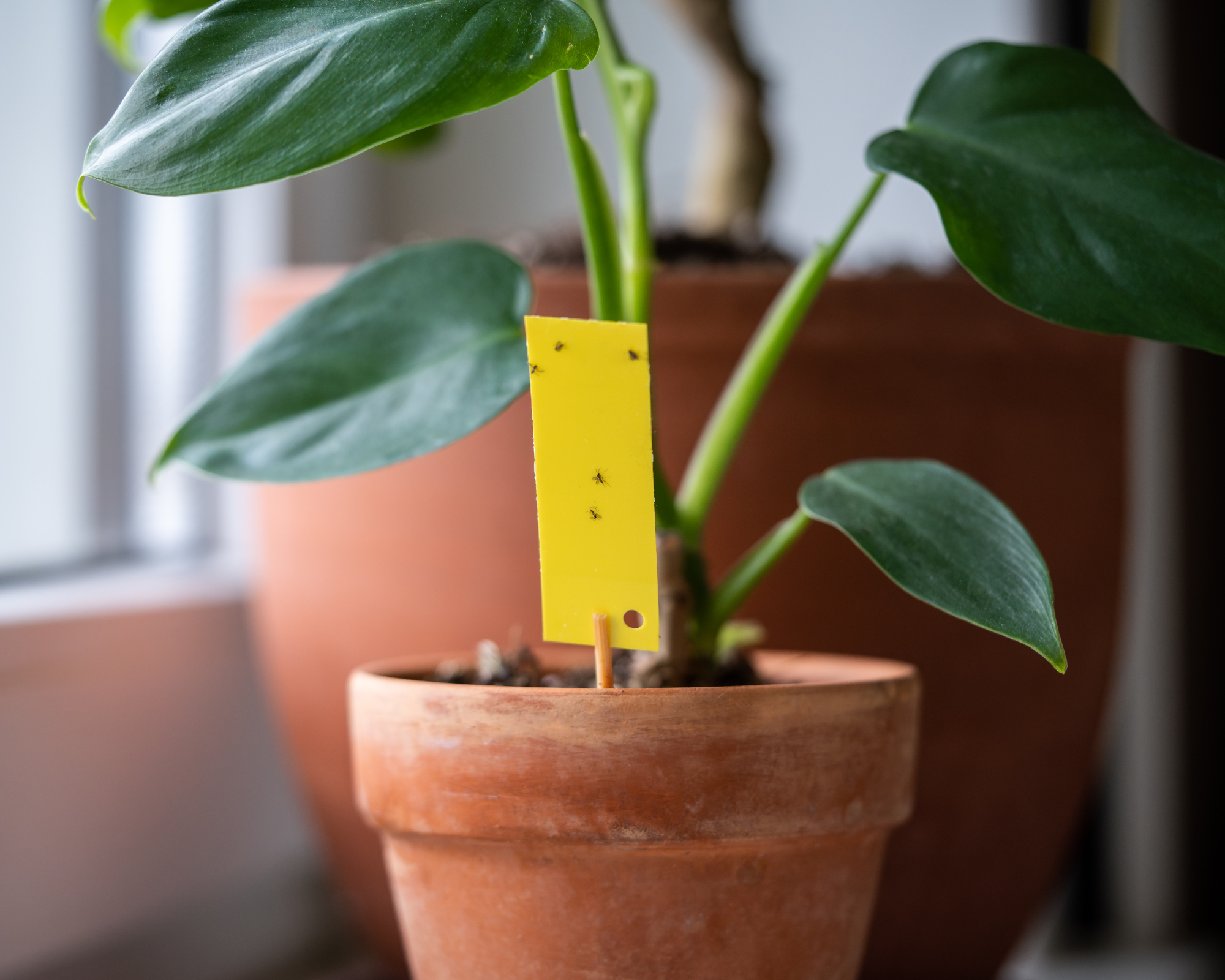
Houseplant pests can hide well at first – spider mites and aphids position themselves under leaves, extracting sap until yellow spots appear. You can see fine webs or sticky residue if you look close. They proliferate in warm, dry rooms, spreading fast from one pot to the next. Mealybugs can join the mix, leaving cottony clumps that weaken stems and trigger widespread yellowing.
Wipe leaves with a damp cloth to knock off pests, then spray neem oil mixed with water. Do it every week until they're gone and isolate the plant so the problem doesn't spread.
Neem oil concentrate, which you can find on Amazon, handles most bugs without harsh synthetic chemicals. You can also introduce beneficial insects like ladybugs for ongoing control or use sticky traps near the base to catch flyers before they settle in.
6. Plants Are Still Acclimating
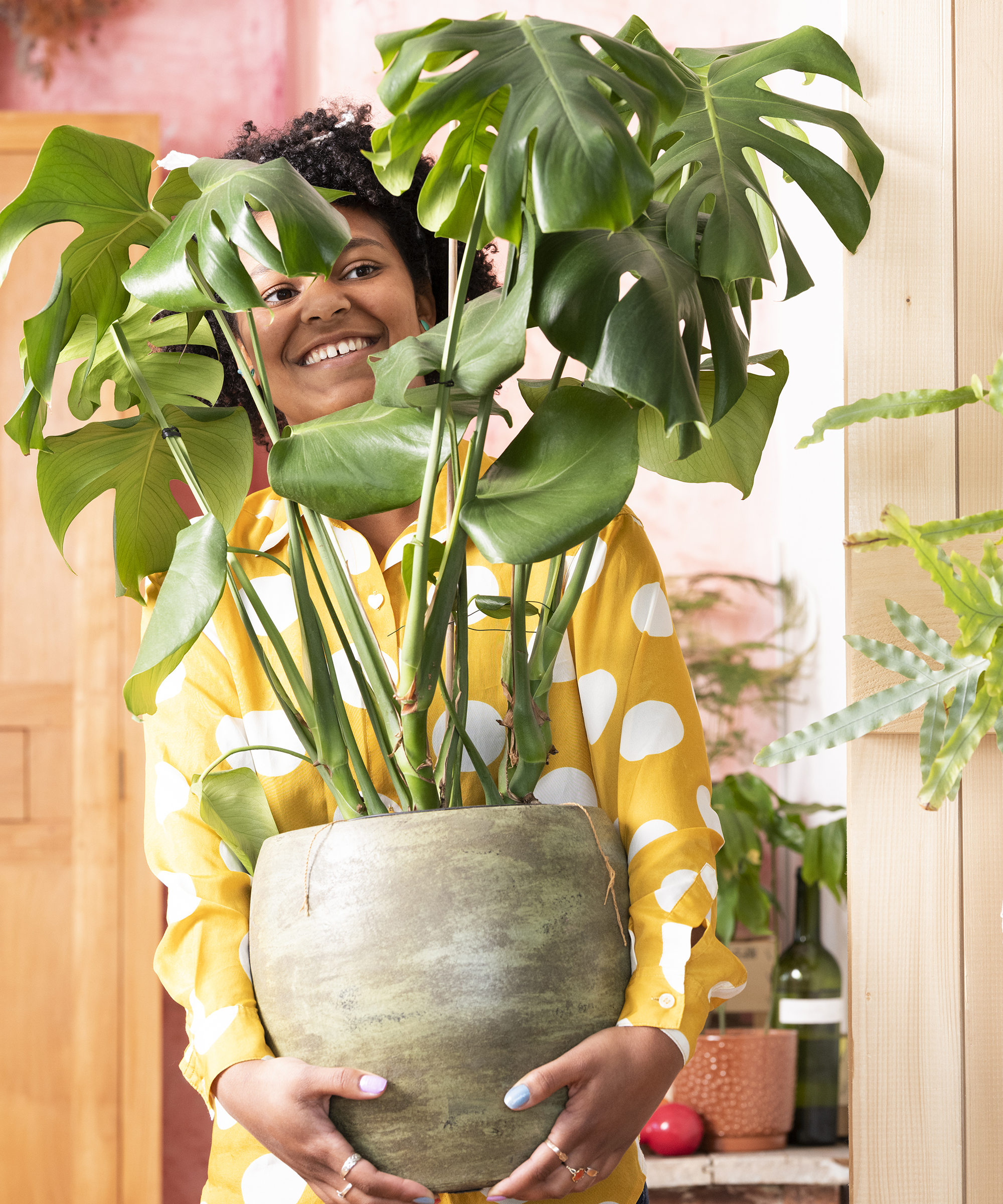
New plants adapt gradually to your home – light changes or a move from the store induces stress and lower leaves may yellow as houseplants acclimate. Don't worry, though. This is normal. It takes new houseplants about one month to acclimate as plants adapt to new temperature, humidity, and lighting conditions.
Give your plants time – at least a couple weeks in a stable spot with proper houseplant care. Trim the yellow leaves to tidy up plants. Then just watch and wait. Plants will bounce back on their own once they feel at home.
Help ease transitions by matching store conditions at first. Gradually increase lighting to avoid shocking sensitive types, such as calatheas.

Tyler’s passion began with indoor gardening and deepened as he studied plant-fungi interactions in controlled settings. With a microbiology background focused on fungi, he’s spent over a decade solving tough and intricate gardening problems. After spinal injuries and brain surgery, Tyler’s approach to gardening changed. It became less about the hobby and more about recovery and adapting to physical limits. His growing success shows that disability doesn’t have to stop you from your goals.